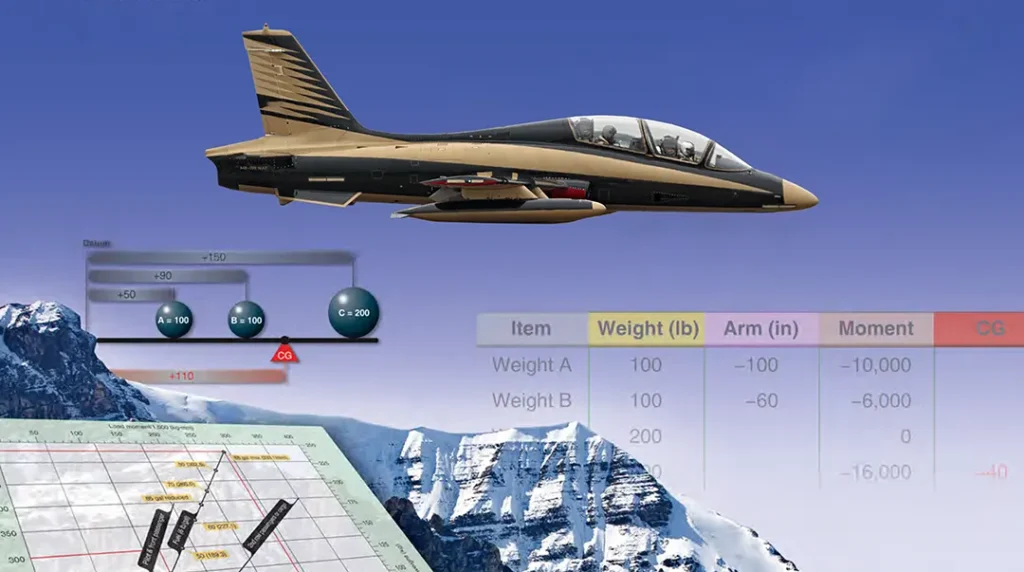
This section begins with the basic principle of aircraft weight and balance control, emphasizing its importance and including examples of documentation furnished by the aircraft manufacturer and by the FAA to ensure the aircraft weight and balance records contain the proper data.
Procedures for the preparation and the actual weighing of an aircraft are described, as are the methods of determining the location of the empty weight center of gravity (EWCG) relative to both the datum and the mean aerodynamic chord (MAC).
Loading computations for general aviation aircraft are discussed using both loading graphs and tables of weight and moment indexes.
Information is included that allows an FAA-certified mechanic or repairman to determine the weight and center of gravity (CG) changes caused by repairs and alterations or removal and installation of equipment. This includes instructions for conducting adverse-loaded CG checks, also explaining the way to determine the amount and location of ballast needed to bring the CG within allowable limits.
The unique requirements for helicopter weight and balance control are discussed, including the determination of lateral CG and the way both lateral and longitudinal CG change as fuel is consumed.
Weight and Balance Control
Weight and Balance Theory
- Weight and Balance Theory
- Weight and Balance Theory (Part 1)
- Weight and Balance Theory (Part 2)
- Weight and Balance Theory (Part 3)
Weighing the Aircraft and Determining the Empty Weight Center of Gravity
- Weighing the Aircraft and Determining the Empty Weight Center of Gravity
- Requirements/Equipment for Weighing
- Preparation for Weighing
- Determining the CG
- EWCG Formulas
- Location of Datum
- Center of Gravity (CG) and Mean Aerodynamic Chord (MAC)
Light Sport Aircraft Weight and Balance Control
Single-Engine Aircraft Weight and Balance Computations
- Single-Engine Aircraft Weight and Balance Computations (Part 1)
- Single-Engine Aircraft Weight and Balance Computations (Part 2)
Multiengine Aircraft Weight and Balance Computations
Center of Gravity Change After a Repair or Alteration
- Equipment List
- Weight and Balance Revision Record
- Weight Changes Caused by a Repair or Alteration
- Empty Weight CG (EWCG) Range and Adverse Load CG Checks
- Ballast
Weight and Balance Control—Helicopter
- Helicopter Weight and Balance Control
- Determining the Loaded CG of a Helicopter
- Effects of Offloading Passengers an Using Fuel
Weight and Balance Control—Commuter Category and Large Aircraft
- Commuter Category and Large Aircraft Weight and Balance Control
- Establishing the Initial Weight of an Aircraft
- Determining the Empty Weight and Empty Weight CG (EWCG)
- Documenting Changes to an Aircraft’s Weight and Balance
- Airplane in Percent MAC
- Operational Empty Weight (OEW)
- Determining CG Changes Caused by Modifying the Cargo (Part 1)
- Determining CG Changes Caused by Modifying the Cargo (Part 2)
- Determining CG Changes Caused by Modifying the Cargo (Part 3)
Use of Computer for Weight and Balance Computations
- Use of Computer for Weight and Balance Computations
- Electronic Calculator
- E6-B Flight Computer
- Dedicated Electronic Flight Computer
